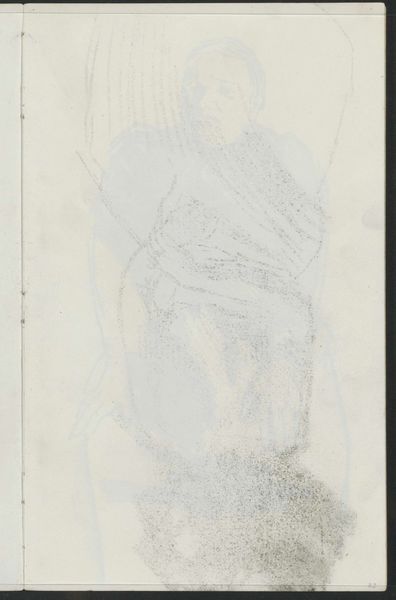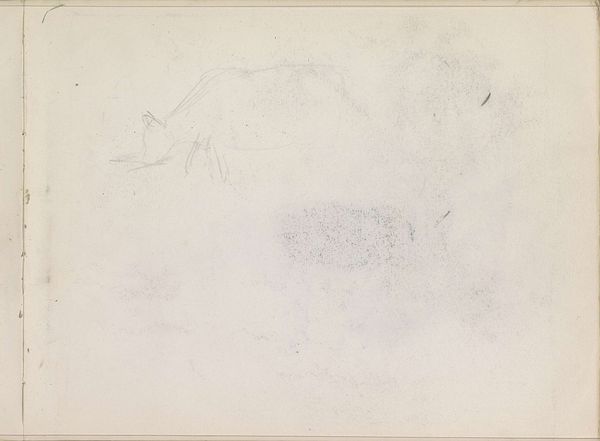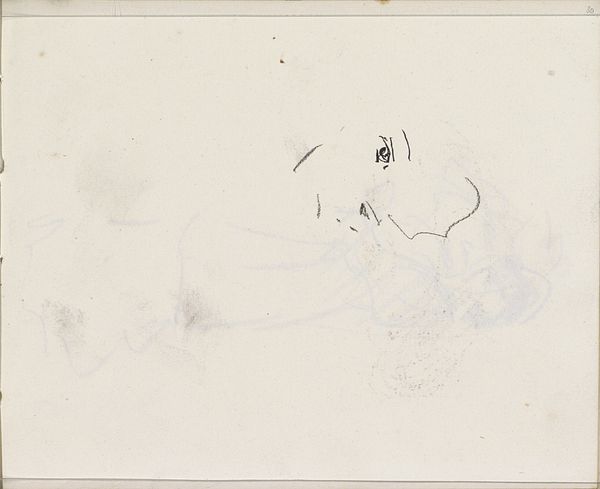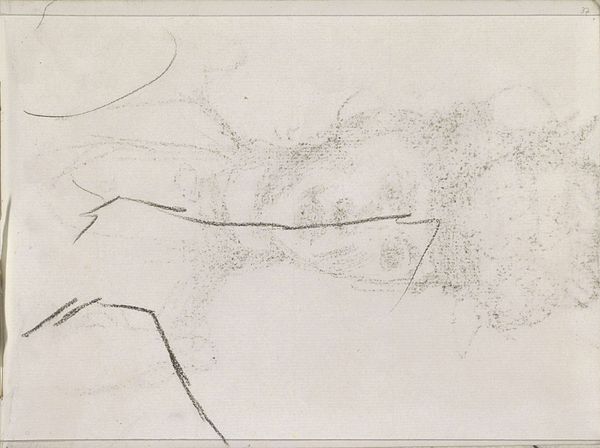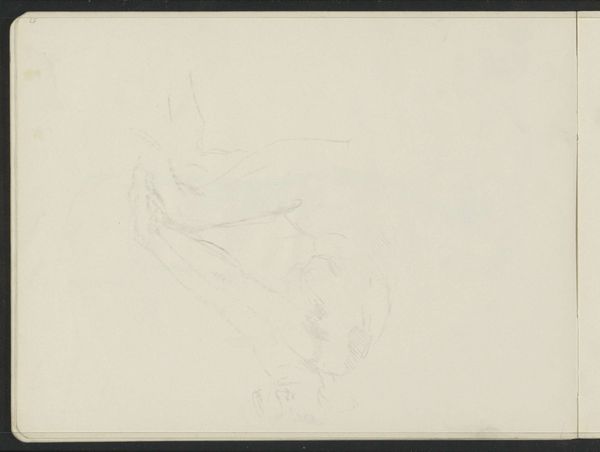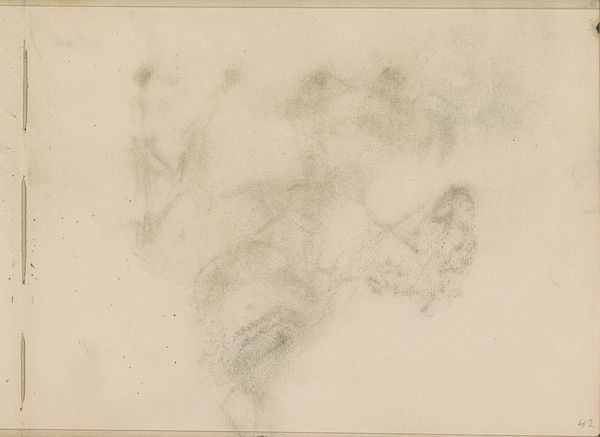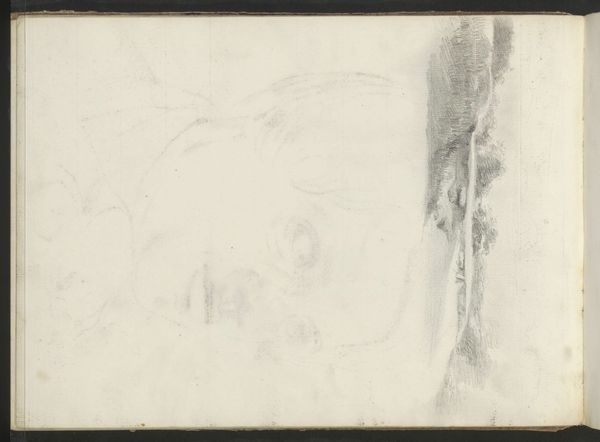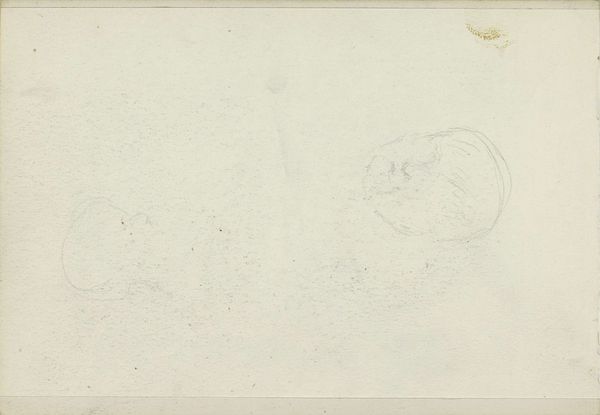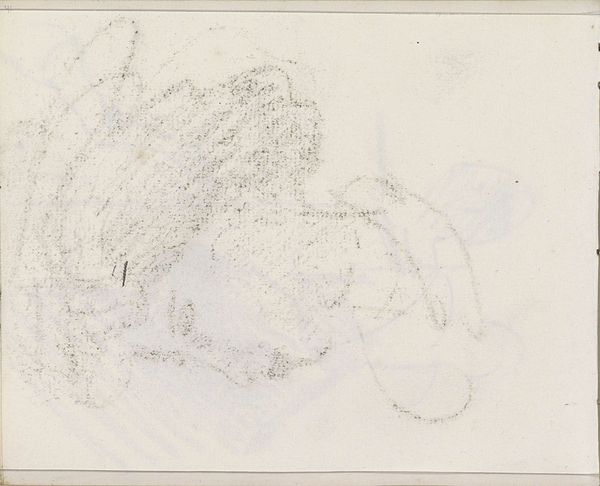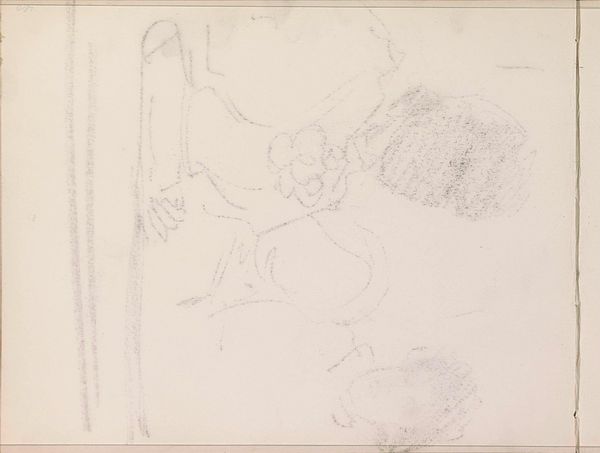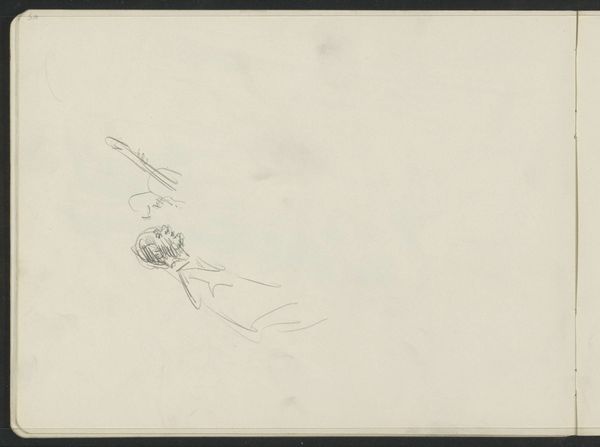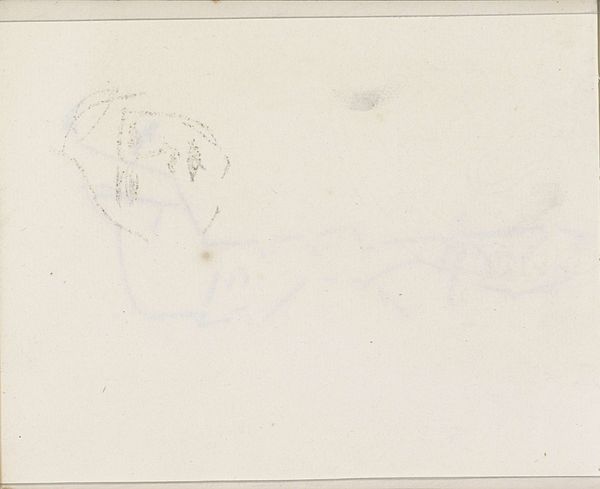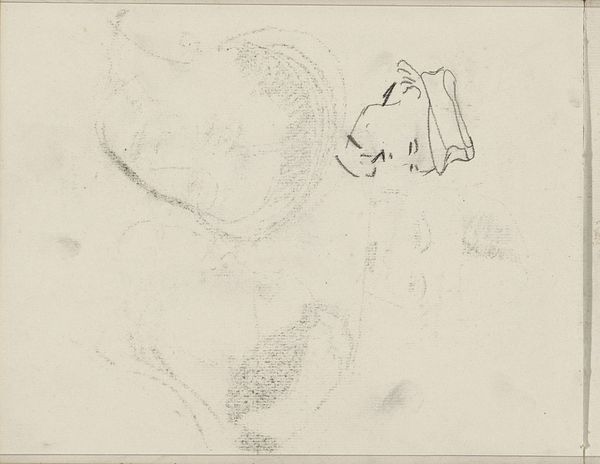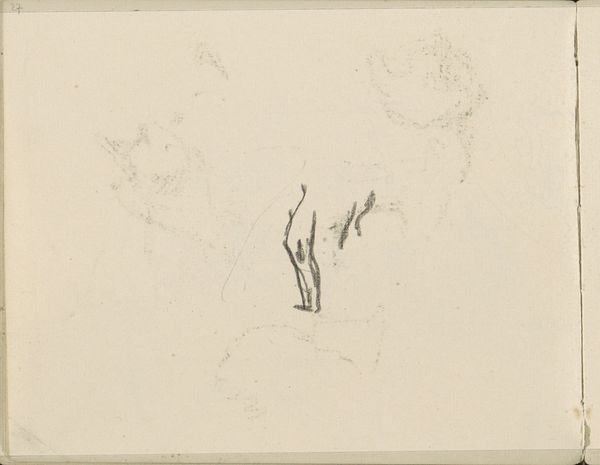
drawing, pencil, graphite
#
drawing
#
pencil sketch
#
pencil
#
abstraction
#
graphite
Copyright: Rijks Museum: Open Domain
Curator: This wispy image before us, "Abklatsch van de krijttekening op blad 6 recto," is a pencil and graphite drawing by Isaac Israels, made sometime between 1875 and 1934. Editor: My first impression is a feeling of ephemerality—a fading memory almost. The abstraction invites the viewer to bring their own experiences. Curator: Indeed. The visible technique reveals Israels' process: the transfer, or "Abklatsch," creating a ghostly double of an original chalk drawing, a method often used for quick reproduction, highlighting a more technical application of artmaking. How labor-intensive were Israels’ drawings in a time when reproduction through sketching could disseminate imagery quickly. Editor: This relates directly to cultural access. Was Israels responding to an emerging need for quick and cheap reproduction or did this reflect access only for certain groups? Did access to particular artistic reproductions reflect the access to political knowledge, or even to class? I would question Israels’ participation and possible complicity in maintaining class structures. Curator: That's an interesting viewpoint, and certainly invites one to consider the socioeconomic contexts. The choice of a rather mundane, functional technique seems counter to the then rising "art for art's sake" movement. Is Israels commenting on commodification itself, or perhaps democratizing artmaking? Editor: Well, how does this "technical" aspect manifest within the greater context of art during the late 19th and early 20th centuries? Mass production and reproduction facilitated a global distribution network, which, naturally, privileged certain producers above others, leading to international tensions. Curator: A sharp consideration, for sure. The Rijksmuseum holding this piece allows a discourse on artistic agency, technique, and social structures of labor. Perhaps thinking about material as process creates the access to analyze this abstraction? Editor: This image certainly reveals art making processes that ask some urgent political questions. Curator: For sure; material decisions do a lot of work!
Comments
No comments
Be the first to comment and join the conversation on the ultimate creative platform.
